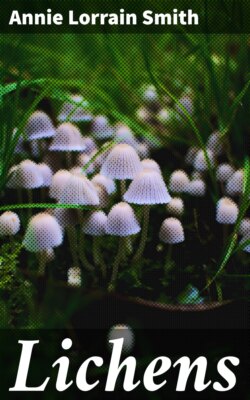Читать книгу Lichens - Annie Lorrain Smith - Страница 44
На сайте Литреса книга снята с продажи.
D. Displacement of Algae within the Thallus
Оглавлениеa. Normal displacement. Lindau[304] has contrasted the advancing apical growth of the creeping alga Trentepohlia with the stationary condition of the unicellular species that multiply by repeated division or by sporulation, and thus form more or less dense zones and groups of gonidia in most lichens. The fungus in the latter case pushes its way among the algae and breaks up the compact masses by a shoving movement, thus letting in light and air. The growing hypha usually applies itself closely round an algal cell, and secondary branches arise which in time encircle it in a network of short cells. In the thallus of Variolaria[305] the hyphae from the lower tissues, termed push-hyphae by Nienburg[306], push their way into the algal groups and filaments composed of short cells come to lie closely round the individual gonidia. Continued growth is centrifugal, and the algae are carried outward with the extension of the hyphae (Fig. 12). Cell-division is more active at the periphery, that being the area of vigorous growth, and the algal cells are, in consequence, generally smaller in that region than those further back, the latter having entered more or less into a resting condition, or, as is more probable, these smaller cells are aplanospores not fully mature.
b. Local displacement. Specimens of Parmelia physodes were found several times by Bitter, the grey-green surface of which was marbled with whitish lines, caused by the absence of gonidia under these lighter-coloured areas. The thallus was otherwise healthy as was manifested by the freely fruiting condition: no explanation of the phenomenon was forthcoming. Bitter compared the condition with the appearance of lighter areas on the thallus of Parmelia obscurata.
Something of the same nature was observed on the thallus of a Peltigera collected by F. T. Brooks near Cambridge. The marking took the form of a series of concentric circles, starting from several centres. The darker lines were found on examination to contain the normal blue-green algal zone, while the colour had faded from the lighter parts. The cause of the difference in colouration was not apparent.
